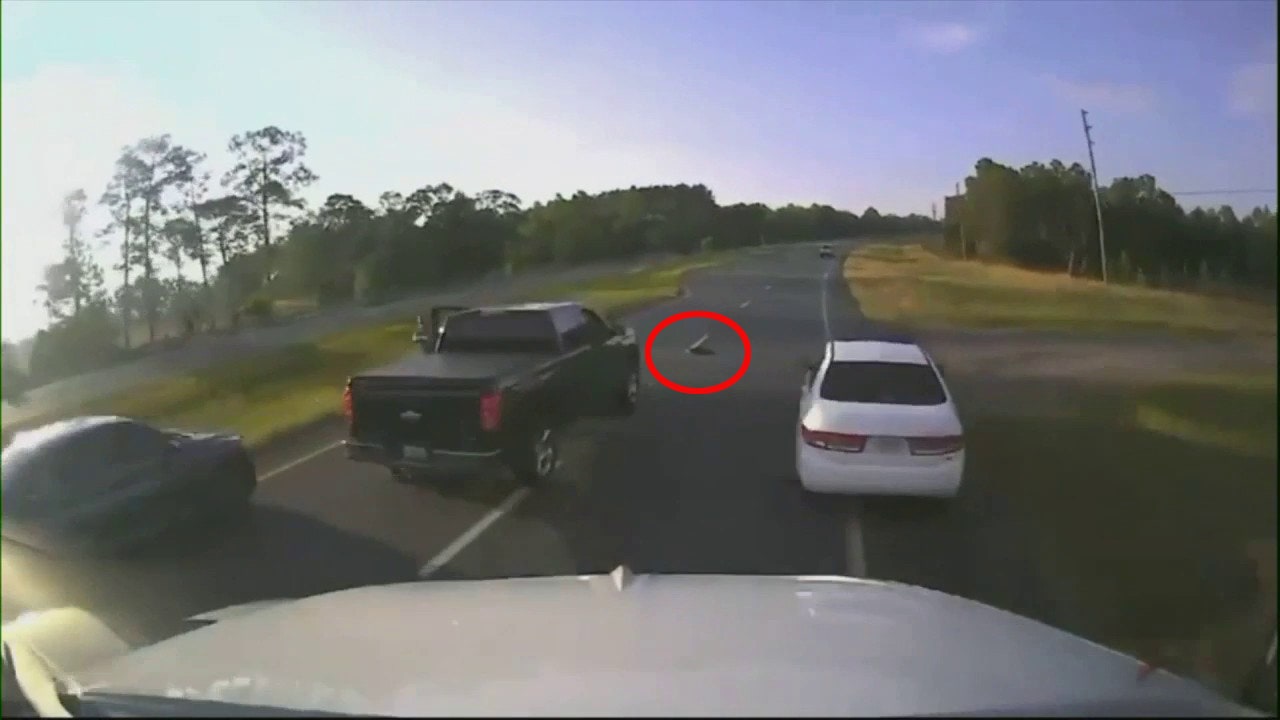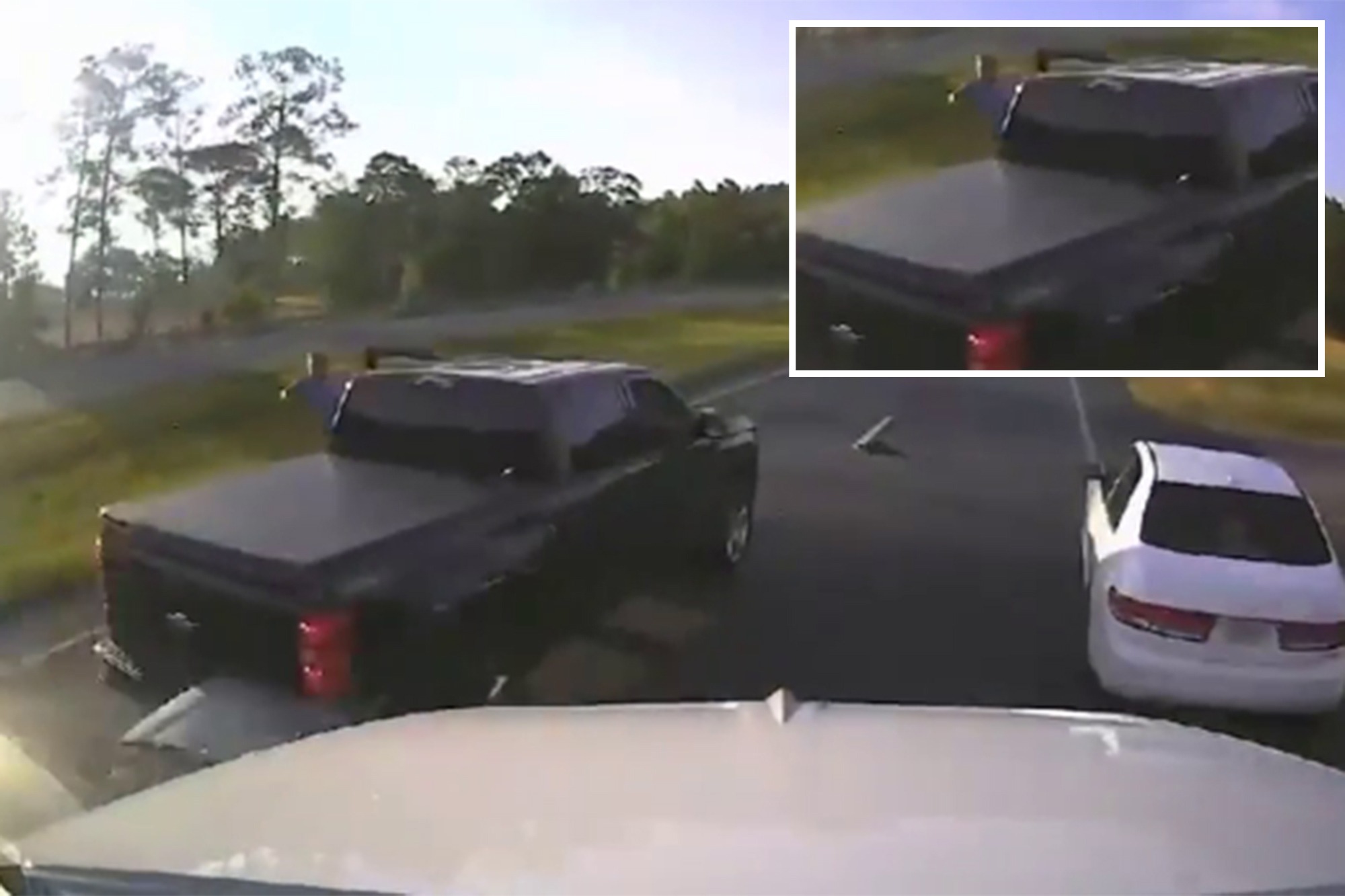A recent traffic incident in Florida has drawn public attention to the complex balance between protecting wildlife and maintaining road safety. According to official reports, a driver on a Florida highway abruptly stopped to avoid hitting a turtle that was crossing the roadway. While the intention behind the action was to protect the animal, it unintentionally led to a multi-car collision.
The Florida Highway Patrol confirmed that the accident occurred during daylight hours on a stretch of highway where traffic was moving at a standard speed. When the driver braked unexpectedly, several vehicles behind were unable to stop in time, resulting in a chain-reaction crash. Fortunately, no serious injuries were reported, though several cars sustained damage, and traffic was delayed as emergency responders cleared the scene.

Wildlife on Roadways: A Common Hazard in Florida
Florida is home to a diverse range of wildlife, including turtles, alligators, deer, and birds, many of which are frequently seen near or on roads, especially in areas adjacent to wetlands, forests, or nature preserves. Turtles, in particular, are known to cross roadways during warmer months when they are seeking nesting grounds or traveling between water sources. While drivers may instinctively want to stop or swerve to avoid hitting animals, doing so without warning on high-speed roads can create dangerous situations.
According to the Florida Fish and Wildlife Conservation Commission (FWC), drivers are advised to remain alert for wildlife, particularly in areas marked by animal crossing signs. However, the agency also emphasizes that driver and passenger safety should take precedence, and sudden maneuvers should be avoided unless the road is clear and it is safe to do so.
Chain-Reaction Collisions and the Importance of Following Distance
Multi-vehicle accidents like the one in this case often occur due to insufficient following distance. When vehicles travel too closely together, even a minor disruption can lead to a collision. The National Highway Traffic Safety Administration (NHTSA) advises maintaining a minimum of three seconds of following distance under normal driving conditions. In heavy traffic, adverse weather, or at higher speeds, even more distance may be needed.
In this particular incident, the unexpected stop for the turtle left drivers behind with little time to react. While no one involved sustained life-threatening injuries, the situation could have been much more serious. Authorities used the opportunity to remind drivers of the importance of staying attentive and keeping a safe distance from other vehicles.

Legal and Ethical Considerations
Under Florida law, causing an accident due to unsafe driving behavior — even if motivated by concern for an animal — may result in citations or liability. While Florida law does not prohibit stopping for animals per se, sudden and unsafe stops on highways or high-speed roads may be considered reckless if they endanger other drivers.
From an ethical perspective, the public often sympathizes with the desire to protect wildlife. However, many safety experts and transportation authorities stress the importance of evaluating road conditions, traffic, and visibility before making a decision to stop or swerve. In some cases, it may be safer to continue driving and report the animal to local wildlife authorities or law enforcement, who are better equipped to handle such situations.
What to Do When You See Wildlife on the Road
The FWC and other agencies offer several tips for drivers who encounter animals on the road:
-
Stay Alert in Wildlife-Prone Areas: Look for warning signs and remain cautious, particularly during dawn and dusk when animals are more active.
-
Do Not Make Sudden Stops: If an animal is spotted, reduce speed gradually and safely if traffic permits.
-
Use Hazard Lights: Alert other drivers if you must slow down or stop for an animal, especially on less-traveled roads.
-
Call Authorities: If an animal poses a danger to drivers, contact local police or wildlife officials so they can take appropriate action.
-
Avoid Personal Intervention on Highways: Attempting to remove an animal yourself on a high-speed road is risky. Leave such actions to professionals.
Increasing Awareness and Public Safety Initiatives
In response to incidents like this one, local governments and transportation departments often consider additional measures to prevent accidents involving wildlife. These can include:
-
Wildlife Crossing Signs: Strategically placed signs in areas with known animal activity.
-
Roadside Fencing: Barriers that direct animals away from busy highways and toward safe crossings.
-
Public Education Campaigns: Programs that inform drivers about how to respond when encountering animals on the road.
Some regions in Florida and other wildlife-rich states have also experimented with wildlife corridors and underpasses that allow animals to cross roads safely without endangering drivers or themselves.

Conclusion
The recent Florida highway incident involving a driver who braked for a turtle serves as a reminder of the unpredictable nature of road travel and the importance of staying prepared for unexpected obstacles. While the intention to protect animals is commendable, safety must remain the top priority.
Maintaining safe following distances, staying alert, and understanding how to react when wildlife appears on the road are essential steps every driver should take. As wildlife continues to share space with expanding road networks, a responsible approach to road safety can help prevent avoidable accidents — protecting both people and animals.
Authorities urge the public to report wildlife sightings on major roadways to local agencies so that proper safety protocols can be followed. In the meantime, continued awareness and responsible driving remain the most effective tools for reducing the risk of wildlife-related collisions.
